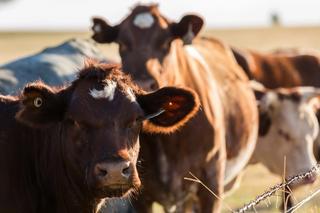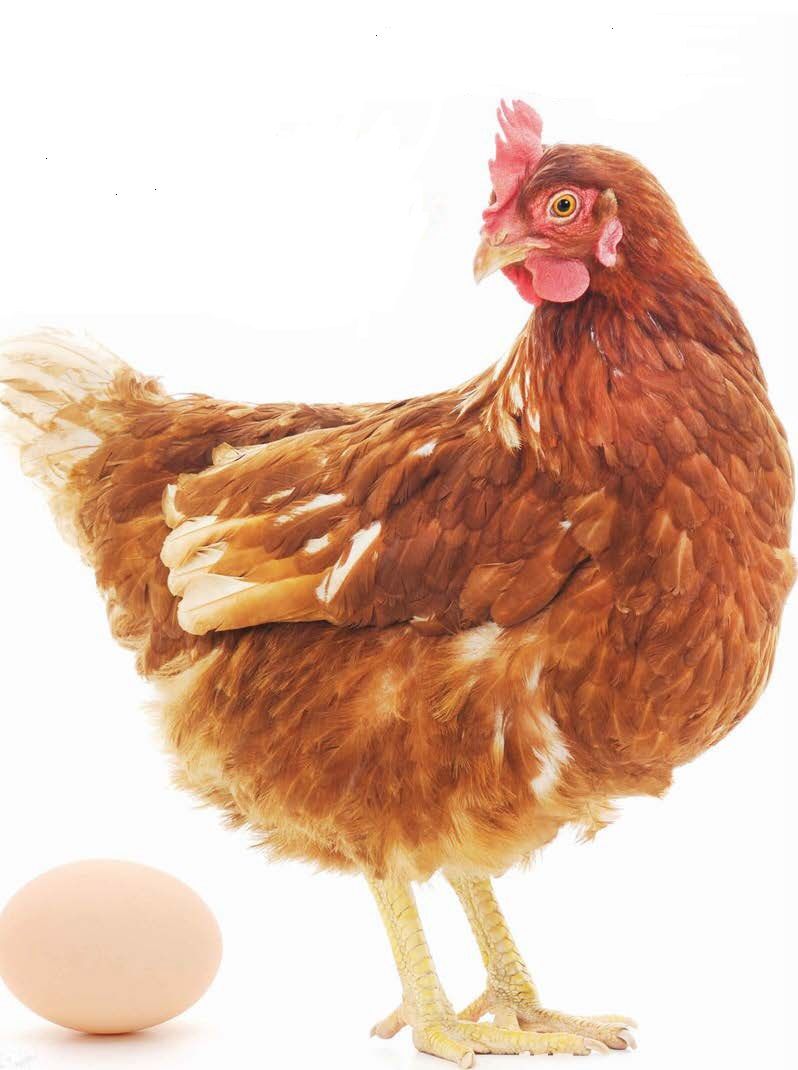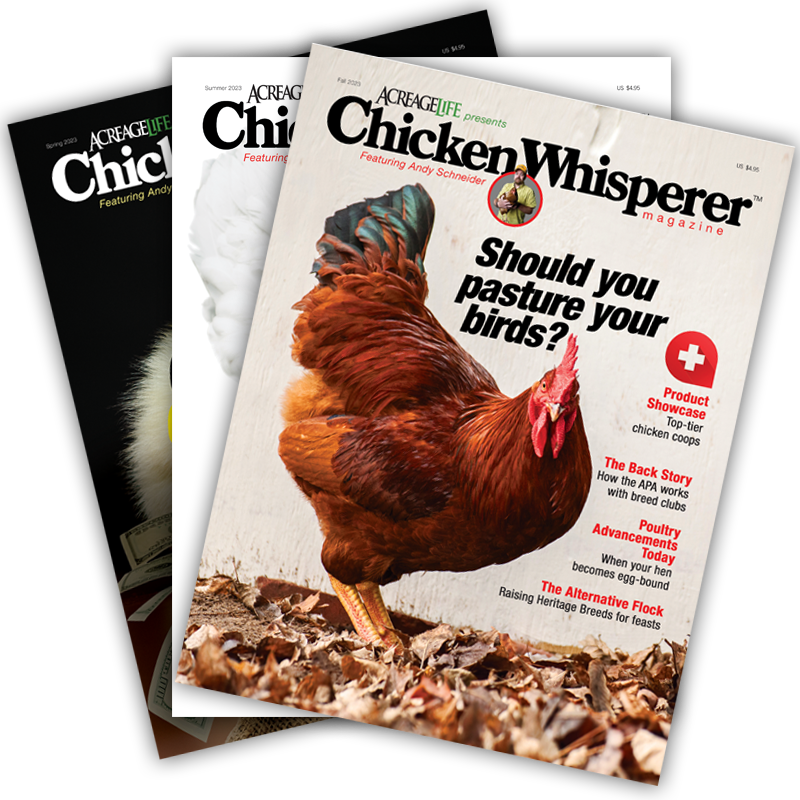Healthier Environments, Happier Hens, More Eggs
Cracking the Pecking Order


Managing a flock of poultry is both an art and a science. At the heart of this dynamic is the “pecking order,” a hierarchical social structure that governs the interactions of chickens and other birds within a flock. Understanding the science behind poultry behavior can lead to healthier, happier hens, more efficient production and a more harmonious farm environment.
The Pecking Order: Nature’s Social Hierarchy
The term “pecking order,” coined in the 1920s by Norwegian zoologist Thorleif Schjelderup-Ebbe, describes the dominance hierarchy in chicken flocks. It’s a natural social system that determines access to resources like food, water and nesting spaces.
At the top of the hierarchy is the dominant bird, often called the “alpha hen,” followed by lower-ranking individuals. This structure minimizes conflict by establishing clear roles and reducing the need for constant competition.
How It Works:
The alpha hen establishes dominance through displays like pecking, chasing or feather ruffling.
Mid-ranking birds maintain stability by respecting higher-ranked individuals while asserting dominance over those below. Low-ranking birds, often the most timid, avoid confrontation and access resources last.
While this system is effective in wild and free-ranging flocks, it can create challenges in confined or artificially managed settings.
Understanding Key Poultry Behaviors
To effectively manage a flock, it’s important to understand the behaviors that underpin the pecking order and the overall social dynamics of poultry. Chickens are natural foragers, spending up to 50% of their time scratching and pecking at the ground. This behavior is not only a way to find food but also a mental stimulation activity that reduces stress. Providing opportunities for foraging by scattering feed or offering treats like mealworms and greens encourages foraging and in turn will reduce some pecking order behavior.
Birds form strong social bonds within their flock, particularly with those of similar rank. Cooperative behaviors, such as mutual preening, strengthen these connections. It is recommended to avoid disrupting established flocks as it can cause further stress and alter social bonds.
That said, there are ways to add new members, but it’s not 100% successful and monitoring is needed for the transition period. One way is to add new members at night of the same age and size. Everyone wakes up together and it can reduce the pecking order.
Aggression peaks during the establishment of a new pecking order or when resources are limited. Signs include feather pecking, chasing and squawking. Ensuring the birds get adequate space, feeders and waterers will reduce competition and aggression.
Hens instinctively seek private, quiet spaces for laying eggs. Disruptions to their environment can lead to stress and reduced egg production. Providing secluded, clean nesting boxes will encourage regular laying behavior.
Environmental Factors That Influence Behavior
The behavior of poultry is influenced by a variety of environmental factors, including:
- Space: Crowded conditions increase aggression and feather pecking. Industry standards recommend at least 4 square feet per bird in coops and 10 square feet in outdoor runs.
Lighting: Excessive light can overstimulate hens, while insufficient light reduces productivity. Maintain 14 hours to 16 hours of light daily for layers. - Temperature: Chickens thrive in temperatures between 65 degrees Fahrenheit and 75 degrees Fahrenheit. Extreme heat or cold can trigger stress-related behaviors like panting or huddling.
- Enrichment: A barren environment leads to boredom and stress. Adding perches, dust baths and objects like hanging cabbage heads can reduce negative behaviors.
Common Challenges and Solutions
Even with careful management, flock behavior can sometimes become problematic. Here are some common challenges and evidence-based solutions:
- Feather Pecking: Feather pecking can range from harmless preening to harmful aggression that causes injury. It is often linked to overcrowding, poor nutrition or boredom. Increasing space, offering proper feed with the adequate amount of protein, vitamins and minerals the bird needs and providing enrichment activities to keep birds engaged and reduce feather pecking.
- Bullying: Lower-ranking birds may be bullied to the point of injury or starvation. The cause is generally insufficient access to resources or by introducing new birds without care. By adding multiple feeders and waterers and using barriers to create hiding spots for timid birds, there will be less bullying and aggression creating more harmony for the flock.
- Stress and Cannibalism: Severe stress can escalate into cannibalistic behaviors, especially in confined systems. The cause is typically overcrowding, heat stress or injury within the flock. Maintaining optimal conditions, removing injured birds promptly will help with stress and cannibalism. The issue with behavior is that one bird can teach the rest, therefore removing the bully is important too to resolve the situation.
The Role of Genetics and Breed
Not all breeds exhibit the same behaviors or tolerance levels. There are more calm breeds, such as Orpingtons and Australorps, which are less aggressive and better suited to mixed flocks. Active breeds, such as Leghorns and Rhode Island Reds, may require more space
and stimulation.
Understanding the behavioral tendencies of specific breeds can help you design a management plan tailored to your flock’s needs.
The Science of Happy Hens
Scientific research has shown that addressing the physical, social and psychological needs of poultry leads to better outcomes in both welfare and productivity.
Key findings include:
- Stress Reduction: Enriched environments and proper nutrition reduce stress hormones, improving egg quality and laying frequency.
- Health Benefits: Birds in well-managed flocks experience fewer injuries, infections and behavioral issues.
- Improved Productivity: Happy hens produce more consistent and higher-quality eggs.
Practical Applications for Flock Owners
Whether you’re a backyard hobbyist or a commercial producer, applying the science of poultry behavior can transform your flock management.
- Observe Regularly: Spend time watching your flock to identify subtle changes in behavior or hierarchy.
- Plan Introductions Carefully: When adding new birds, quarantine them first, then introduce them gradually to minimize disruptions.
- Keep Records: Documenting behaviors, health issues and production data can help you spot trends and make informed decisions.
Conclusion
The pecking order may seem like a simple dominance hierarchy, but it’s a complex and fascinating system that plays a vital role in flock dynamics.
By understanding the science of poultry behavior, you can create a healthier, happier environment for your birds, leading to better welfare and higher productivity.
Tags:Poultry Advancements

Chicken Whisperer is part of the Catalyst Communications Network publication family.















